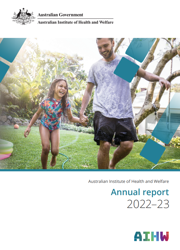Unlocking new insights through data linkage

Australia’s health system is complex. The Australian, state, territory and local governments share responsibility for the health system. One challenge faced is to make better use of health data to provide a more integrated view of our health system and the complex interactions people have with health and welfare services. Data linkage is the key to this.
This year, we continued to lead data linkage innovation through improvements to our linkage services and assets. This included:
- using machine learning to improve data quality while further streamlining linkage processes
- working with data custodians to broaden and build on the data sets captured within our linked data assets
- making it easier for researchers to access and use our linked data assets.
In 2022–23, we released several reports using the National Integrated Health Services Information (NIHSI) linked data asset, which unlocked new insights into the health experiences of people in Australia.
One example of this is the Last year of life: patterns in health service use and expenditure report released in November 2022. This was the first comprehensive examination of health services used by Australians in the final 12 months of life and the cost of those services to the health system. Services included hospital admissions, emergency department presentations, Medicare services, and prescriptions supplied under the Pharmaceutical Benefits Scheme.
This analysis uncovered new insights about health service use and expenditure of people in their last year of life, which would not have been possible without NIHSI. It found that:
- Health service spending was 14 times higher for people in their last year of life than for others (an average of $24,000 compared with $1,700 respectively).
- People who died used more health services in their last year of life than the rest of the population over a 12-month period.
- The largest difference in health service use was for hospital admissions, with an average of 2.6 admissions per person in their last year of life compared with 0.1 admissions per person per year for the rest of the population.
- Some people had no contact with the health system in the 12 months before their death. These tended to be young people and people who died suddenly from causes such as injury, including self-inflicted injury.
Our linked data assets provide a better understanding of how people interact with the health system in the period leading up to death. This information is vital for health care provision and to assess and evaluate health service planning and policy.



